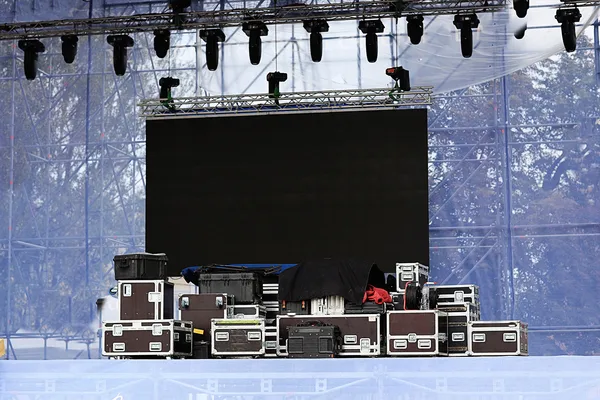
Choose the appropriate LED screen resolution
LED screen resolution is an important indicator of an LED display’s performance. The higher the resolution, the clearer the image quality, and the better the viewing experience for the audience.
In fact, selecting the appropriate LED screen resolution requires a comprehensive consideration of the venue and specific requirements. How can you choose the right LED screen resolution for your needs? We hope this article will help clarify any questions you may have.

Overview of LED Screen Resolution
LED screen resolution refers to the total number of pixels on the entire LED display screen. Pixels are the foundation of LED screen imaging; the more pixels there are, the richer the details of the LED screen image, and the clearer the image appears to the naked eye.
Calculation of LED Screen Resolution
Rectangular LED Screens
The resolution calculation for rectangular LED screens is relatively straightforward, typically expressed using the formula that multiplies the number of pixels along the vertical and horizontal axes of the LED screen.
Resolution Formula: Resolution = Length (number of horizontal pixels on the LED screen) × Height (number of vertical pixels on the LED screen) (Unit: pixels)
Non-rectangular LED screens
The shapes and sizes of LED modules in non-rectangular LED screens are non-standard, so it is necessary to distinguish and count LED modules of different shapes and sizes. Then, calculate the resolution of each LED module for different types of assemblies, multiply the resolution of each type of LED module by its quantity, and sum all values to obtain the resolution of the non-rectangular LED screen.
Resolution calculation formula: Resolution = Area of Type 1 module × Pixel density × Quantity + Area of Type 2 module × Pixel density × Quantity + Area of Type 3 module × Pixel density × Quantity + Area of Type n module × Pixel density × Quantity (Unit: pixels)
Sphere LED Screen
The resolution of a sphere LED screen can be calculated by multiplying the surface area of the sphere by the pixel density of the LED modules.
Resolution formula: Resolution = Sphere Area × Pixel Density (Unit: Pixels)
Impact of LED screen resolution
Visual effects
If the resolution of the LED screen is too low, the edges of displayed patterns will become blurry, and when viewed up close, pix elation may even occur, severely affecting the viewing experience of the audience.
Therefore, you should use an LED screen resolution that matches the scene size and content source resolution as much as possible to display the image, ensuring a better viewing experience and enhanced visual effects for the audience.
Viewing Distance
LED screen resolution and pixel pitch exhibit an inverse relationship. In most cases, the smaller the pixel pitch of an LED screen, the higher the resolution.
However, LED displays with smaller pixel pitches require a shorter optimal viewing distance. Therefore, it is generally recommended to install higher-resolution LED screens in smaller venues.

Cost
Higher resolution means more LED pixels, which requires more materials and thus higher material costs. From another perspective, more LED pixels also demand higher-performance driver ICs, resulting in higher purchase costs.
Overall, without considering differences in LED production materials or brands, higher LED screen resolution generally leads to higher purchase costs.
Common LED screen resolution types
720p
720p, also known as HD, refers to LED screens with a resolution of 1280×720 pixels. 720p is the most basic high-definition resolution standard. For high-quality content sources, 720p cannot fully utilize its image quality and is only suitable for scenarios with simpler content sources and lower viewing requirements.
1080p
1080p, also known as FHD, refers to an LED screen with a resolution of 1920×1080 pixels. 1080p is the most popular high-definition resolution on the market following 720p, with many common TV programs and streaming videos created using 1080p as the standard content source.
4K
4K refers to an LED screen with a resolution of 3840×2160 pixels. Compared to 1080p, 4K has three times the number of pixels. 4K LED displays offer extremely clear and rich visuals, making them ideal for large-scale LED screens in cinemas, stage performances, and other scenarios with high viewing requirements.
8K
8K represents the pinnacle of display resolution, with a resolution of 7680×4320 pixels. Currently, 8K has limited market applications due to its high cost, as most use cases do not require such high resolution. 8K LED screens are primarily used in advanced technology fields such as virtual reality LED walls or medical imaging.

How to choose the appropriate LED screen resolution for your needs?
Actual Application
Before selecting an LED screen resolution, you must first clarify the actual application for which you are purchasing the LED display.
If you are purchasing an LED display solely for everyday activities such as meetings or watching entertainment videos, with relatively low viewing requirements, then standard HD resolutions like 720p or 1080p are sufficient.
If you are a video creator or game post-production professional, you will naturally require a display with a higher resolution, such as a 4K resolution display, which can provide richer and clearer image details, ensuring the quality of your video production.
Viewing Distance
Resolution and pixel pitch are related, but there is another variable: screen size. When the screen size is the same, the higher the resolution, the smaller the pixel pitch, and the closer the appropriate viewing distance should be, and vice versa.
Budget
When purchasing an LED display, the most important factor to consider is your budget. Even if you have already determined the LED screen size and resolution you need, if it exceeds your budget, you can communicate with the LED manufacturer to adjust the resolution without significantly compromising the display quality, thereby achieving cost savings.
Conclusion
You don’t need to blindly pursue high-resolution LED screens. By selecting the appropriate LED screen resolution based on your application requirements and usage scenarios, you can not only achieve optimal display quality and viewing experience, but also significantly reduce purchase costs.